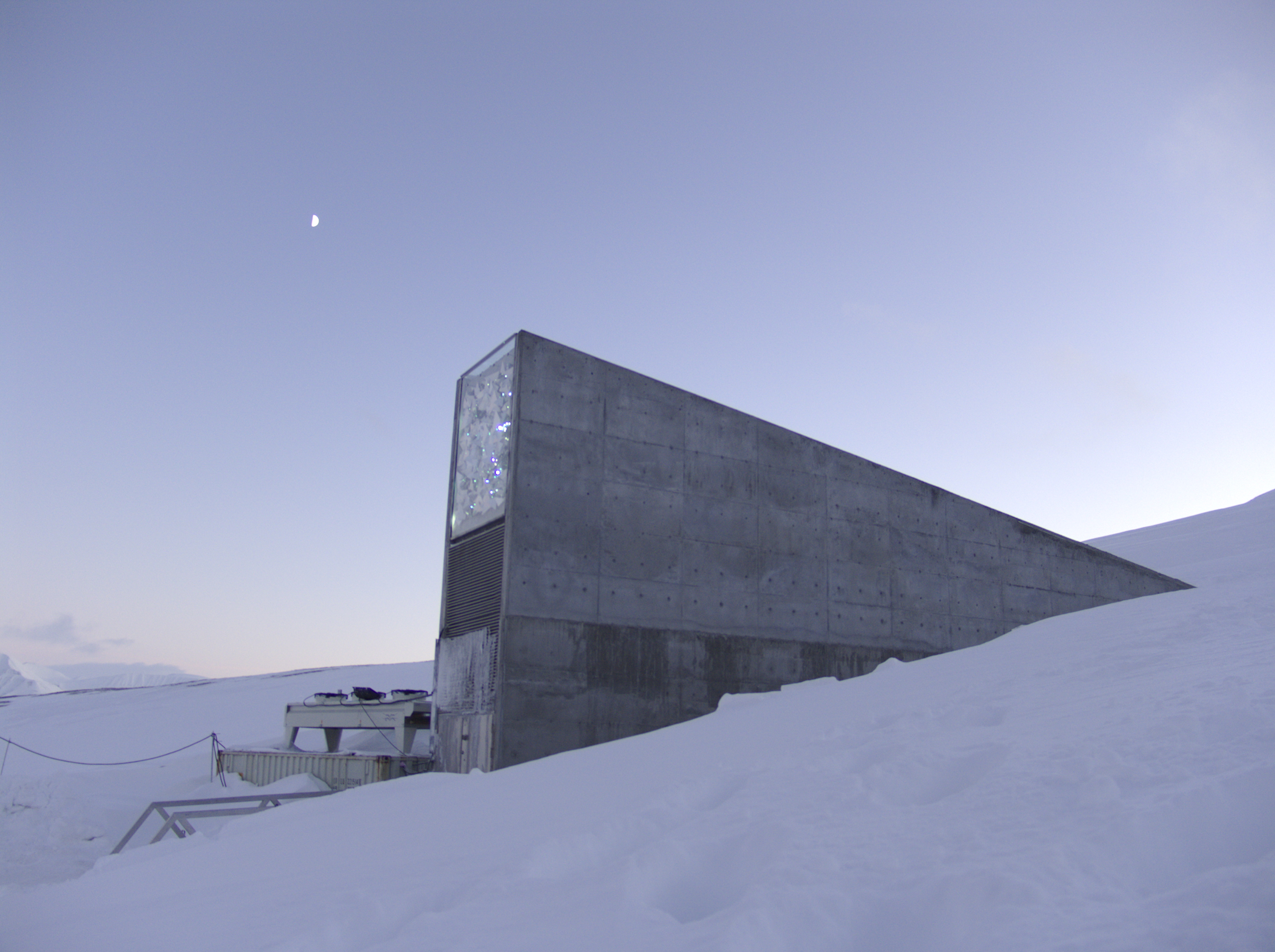 What does a remote Norwegian island 800 miles from the North Pole have to do with our food supply? Much more than you may think. Dr. Cary Fowler, speaking at the American Livestock Breeds Conservancy’s (ALBC) Annual Conference last week in Austin, Texas, explained how the Svalbard Global Seed Vault will protect global crop diversity for the next few millennia. Rarely covered by media and or included in the public debate about our food system, these genetics preservationists are vital to the sustainability of future food production.
What does a remote Norwegian island 800 miles from the North Pole have to do with our food supply? Much more than you may think. Dr. Cary Fowler, speaking at the American Livestock Breeds Conservancy’s (ALBC) Annual Conference last week in Austin, Texas, explained how the Svalbard Global Seed Vault will protect global crop diversity for the next few millennia. Rarely covered by media and or included in the public debate about our food system, these genetics preservationists are vital to the sustainability of future food production.
Listening to his description of the frigid Norwegian facility were about 75 rare livestock breeders, enduring one of Austin’s coldest autumn days with temperatures plunging into the “horrifying” low of 40 degrees. Gathered in a warm room, these mostly hobby farmers who tirelessly raise livestock such as Mulefoot hogs, gazed at Fowler’s images of a tunnel opening thrust into blue-ish Arctic glaciers.
The president of the ALBC, Dr. Eric Hallman, connected the room full of animal breeders to the business of seed breeding. For the past 40 years, the ALBC has been supporting farmers and ranchers who conserve genetic diversity in domestic livestock breeds as our food system has settled on a few breeds for our world’s large-scale meat production.
The selective breeding of livestock that draws upon specialized animal genetics increases the productivity of our protein supply. This practice has turned over less commercially viable genes to a small group of rare livestock breeders, many of whom were in the room that night.
Dr. Fowler shared his stories about the process of building the Svalbard Global Seed Vault, located on the Norwegian island of Spitsbergen. Working with the Consultative Group on International Agricultural Research (CGIAR), Fowler led an international team of government agencies, foundations, and private companies to build a secure vault to conserve hundreds of thousands (800,000 samples at last count) of the world’s seeds. The goal is to protect crop diversity against any natural or unnatural disaster. Before the vault was built, many developing countries, some of which are politically unstable, maintained seed vaults that were inadequate. A vault in the Philippines was flooded during a typhoon, destroying many of the country’s valuable seeds.
With predictions that the demand for food will increase by 60 percent during the next three decades, the need for conserving diversity in both crops and animals is critical. The future food supply won’t be produced by these rare breed and seed genetics but instead enhanced and invigorated by these genetics conservationists. Without these conservation efforts, plant and animal adaptations, ever more critical during this time of climate change, will be severely limited. Let us not forget that it was Charles Darwin in the mid-19th century who pointed out the connection between genetic diversity and adaptation.
The U.S. has been involved in promoting seed diversity, also during the inventive 19th century. The predecessor of the USDA, the US Patent Office, began to distribute seeds during the early1800s. The office sent small packets of seeds to farmers throughout the US, inviting them to experiment with the seeds, dispersing and sowing crop diversity, which is still evident today. The farmers planting those seeds created crops that adapted to local and regional conditions.
Because US farmers may have over 50 percent of the world’s wheat genetics, they are increasingly under the mindful eye of the government’s national security agencies. After 9/11 and a sequence of natural disasters such as Katrina in 2005, the USDA and other government agencies saw the protection of genetics underlying our food supply to be as important as the protection the nation’s infrastructure. The increasing sense of international insecurity and the concern about feed our growing world population brings together both the tiny island vault near the Artic and the small group of rare breed farmers listening to Dr. Fowler kindred souls. And while the Svalbard Seed Vault is a monument to Fowler’s astute leadership and international cooperation, these small farmers have no visibility in the current public conversation about food security. We should change this by sending the ALBC a little love. You can reach them here: http://www.livestockconservancy.org.